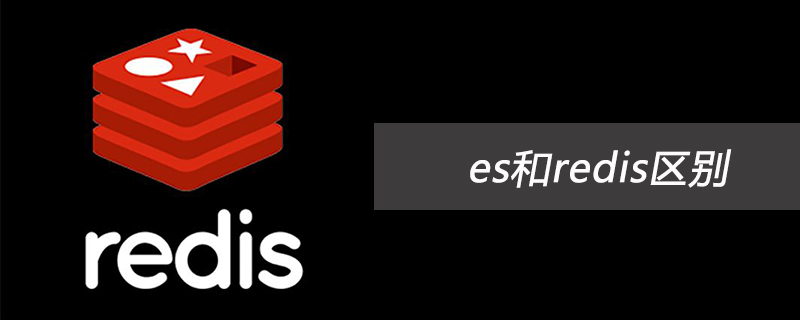
Redis lists are simple string lists, sorted in insertion order. You can add an element to the head (left) or tail (right) of the list
Recommended: redis introductory tutorial
A list can contain up to 232 - 1 elements (4294967295, over 4 billion elements per list).
{
'numbers': [1, 2, 3, 4, 5, 6, 7,8]
'letters': ['a', 'b', 'c', 'd', 'e', 'f', 'g','h']
}This is the list type. The elements in the list must be strings, and data types cannot be nested.
All operations of the list type are list operations corresponding to the key, (think about it, there should be, add, delete, insert at the specified position, delete at the specified position, pop up, cut, some in python, I think redis They should all be there)
LPUSH key value [value ...] #Add elements to the left
redis 127.0.0.1:6379> lpush numbers 1 (integer) 1 redis 127.0.0.1:6379> lpush numbers 2 3 (integer) 3
RPUSH key value [value ...] #Add data to the right
LLEN key #Get the number of elements in the list
redis 127.0.0.1:6379> llen numbers (integer) 3
LRANGE key sart stop # Get list fragments Similar to Python's slicing function, the difference is that the returned data when slicing contains stop position data
redis 127.0.0.1:6379> lrange numbers 0 -1 #获取所有的列表内数据 "3" "2" "1"
redis 127.0.0.1:6379> lrange numbers 0 0 "3"
redis 127.0.0.1:6379> lrange numbers 0 5 "3" "2" "1"
redis 127.0.0.1:6379> lrange numbers 0 3 "3" "2" "1"
LPOP key # Pop an element from the left
redis 127.0.0.1:6379> lrange numbers 0 -1 "3" "2" "1"
redis 127.0.0.1:6379> lpop numbers "3"
redis 127.0.0.1:6379> lrange numbers 0 -1 "2" "1"
RPOP #Pop an element from the right The principle is the same as above
LREM key count value
# Delete the specified value in the list
#count >0 Delete the value equal to value starting from the left position of count
redis 127.0.0.1:6379> lrange numbers 0 -1 "4" "3" "2" "1"
redis 127.0.0.1:6379> lrem numbers 1 3 (integer) 1
redis 127.0.0.1:6379> lrange numbers 0 -1 "4" "2" "1"
#count >0 Delete the value equal to value starting from the left position of count
#count=0 Delete all elements whose value is value
LINDEX key index #Get the element value of the specified index
redis 127.0.0.1:6379> lrange numbers 0 -1 "4" "1"
redis 127.0.0.1:6379> lindex numbers 3 (nil) #没有返回nil redis 127.0.0.1:6379> lindex numbers 1 "1" redis 127.0.0.1:6379> lindex numbers 0 "4"
LSET key index value # When setting the value of the specified position, you must pay attention to replacing the original position, unless the original position has no value
redis 127.0.0.1:6379> lrange numbers 0 -1 "4" "1" redis 127.0.0.1:6379> lset numbers 1 2 OK redis 127.0.0.1:6379> lset numbers 1 3 OK redis 127.0.0.1:6379> lrange numbers 0 -1 "4" "3"
NOTE: Out of range setting is an error
redis 127.0.0.1:6379> lset numbers 2 3 (error) ERR index out of range
LTRIM key start end #Cut the original list, elements outside the specified range will be deleted
redis 127.0.0.1:6379> lrange numbers 0 -1 "4" "3" "2" "1"
redis 127.0.0.1:6379> ltrim numbers 1 2 OK redis 127.0.0.1:6379> lrange numbers 0 -1 "3" "2"
LINSERT key before|after pivot value #To the list Insert the value. You can tell by looking at the name. Should you insert it before or after the pivot?
redis 127.0.0.1:6379> lrange numbers 0 -1 "3" "2" redis 127.0.0.1:6379> linsert numbers after 2 1 (integer) 3 redis 127.0.0.1:6379> lrange numbers 0 -1 "3" "2" "1" redis 127.0.0.1:6379> lrange numbers 0 -1 "3" "2" "1" redis 127.0.0.1:6379> linsert numbers before 3 4 (integer) 4 redis 127.0.0.1:6379> lrange numbers 0 -1 "4" "3" "2" "1"
RPOPLPUSH source destination #Pop an element from the right side of the source and add it to the left side of the destination
redis> LRANGE alpha 0 -1 # 查看所有元素 "a" "b" "c" "d" redis> RPOPLPUSH alpha reciver # 执行一次 RPOPLPUSH 看看 "d"
redis> LRANGE alpha 0 -1 "a" "b" "c" redis> LRANGE reciver 0 -1 "d"
Related recommendations:
mysql video tutorial: https://www.php.cn/course/list/51.html
The above is the detailed content of Introduction to redis list types. For more information, please follow other related articles on the PHP Chinese website!
 es和redis区别Jul 06, 2019 pm 01:45 PM
es和redis区别Jul 06, 2019 pm 01:45 PMRedis是现在最热门的key-value数据库,Redis的最大特点是key-value存储所带来的简单和高性能;相较于MongoDB和Redis,晚一年发布的ES可能知名度要低一些,ES的特点是搜索,ES是围绕搜索设计的。
 一起来聊聊Redis有什么优势和特点May 16, 2022 pm 06:04 PM
一起来聊聊Redis有什么优势和特点May 16, 2022 pm 06:04 PM本篇文章给大家带来了关于redis的相关知识,其中主要介绍了关于redis的一些优势和特点,Redis 是一个开源的使用ANSI C语言编写、遵守 BSD 协议、支持网络、可基于内存、分布式存储数据库,下面一起来看一下,希望对大家有帮助。
 实例详解Redis Cluster集群收缩主从节点Apr 21, 2022 pm 06:23 PM
实例详解Redis Cluster集群收缩主从节点Apr 21, 2022 pm 06:23 PM本篇文章给大家带来了关于redis的相关知识,其中主要介绍了Redis Cluster集群收缩主从节点的相关问题,包括了Cluster集群收缩概念、将6390主节点从集群中收缩、验证数据迁移过程是否导致数据异常等,希望对大家有帮助。
 Redis实现排行榜及相同积分按时间排序功能的实现Aug 22, 2022 pm 05:51 PM
Redis实现排行榜及相同积分按时间排序功能的实现Aug 22, 2022 pm 05:51 PM本篇文章给大家带来了关于redis的相关知识,其中主要介绍了Redis实现排行榜及相同积分按时间排序,本文通过实例代码给大家介绍的非常详细,对大家的学习或工作具有一定的参考借鉴价值,希望对大家有帮助。
 详细解析Redis中命令的原子性Jun 01, 2022 am 11:58 AM
详细解析Redis中命令的原子性Jun 01, 2022 am 11:58 AM本篇文章给大家带来了关于redis的相关知识,其中主要介绍了关于原子操作中命令原子性的相关问题,包括了处理并发的方案、编程模型、多IO线程以及单命令的相关内容,下面一起看一下,希望对大家有帮助。
 实例详解Redis实现排行榜及相同积分按时间排序功能的实现Aug 26, 2022 pm 02:09 PM
实例详解Redis实现排行榜及相同积分按时间排序功能的实现Aug 26, 2022 pm 02:09 PM本篇文章给大家带来了关于redis的相关知识,其中主要介绍了Redis实现排行榜及相同积分按时间排序,本文通过实例代码给大家介绍的非常详细,下面一起来看一下,希望对大家有帮助。
 一文搞懂redis的bitmapApr 27, 2022 pm 07:48 PM
一文搞懂redis的bitmapApr 27, 2022 pm 07:48 PM本篇文章给大家带来了关于redis的相关知识,其中主要介绍了bitmap问题,Redis 为我们提供了位图这一数据结构,位图数据结构其实并不是一个全新的玩意,我们可以简单的认为就是个数组,只是里面的内容只能为0或1而已,希望对大家有帮助。
 一起聊聊Redis实现秒杀的问题May 27, 2022 am 11:40 AM
一起聊聊Redis实现秒杀的问题May 27, 2022 am 11:40 AM本篇文章给大家带来了关于redis的相关知识,其中主要介绍了关于实现秒杀的相关内容,包括了秒杀逻辑、存在的链接超时、超卖和库存遗留的问题,下面一起来看一下,希望对大家有帮助。


Hot AI Tools

Undresser.AI Undress
AI-powered app for creating realistic nude photos

AI Clothes Remover
Online AI tool for removing clothes from photos.

Undress AI Tool
Undress images for free

Clothoff.io
AI clothes remover

AI Hentai Generator
Generate AI Hentai for free.

Hot Article

Hot Tools

Safe Exam Browser
Safe Exam Browser is a secure browser environment for taking online exams securely. This software turns any computer into a secure workstation. It controls access to any utility and prevents students from using unauthorized resources.

PhpStorm Mac version
The latest (2018.2.1) professional PHP integrated development tool

MinGW - Minimalist GNU for Windows
This project is in the process of being migrated to osdn.net/projects/mingw, you can continue to follow us there. MinGW: A native Windows port of the GNU Compiler Collection (GCC), freely distributable import libraries and header files for building native Windows applications; includes extensions to the MSVC runtime to support C99 functionality. All MinGW software can run on 64-bit Windows platforms.

WebStorm Mac version
Useful JavaScript development tools

mPDF
mPDF is a PHP library that can generate PDF files from UTF-8 encoded HTML. The original author, Ian Back, wrote mPDF to output PDF files "on the fly" from his website and handle different languages. It is slower than original scripts like HTML2FPDF and produces larger files when using Unicode fonts, but supports CSS styles etc. and has a lot of enhancements. Supports almost all languages, including RTL (Arabic and Hebrew) and CJK (Chinese, Japanese and Korean). Supports nested block-level elements (such as P, DIV),






